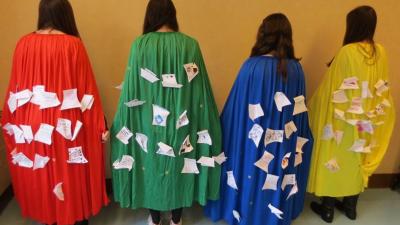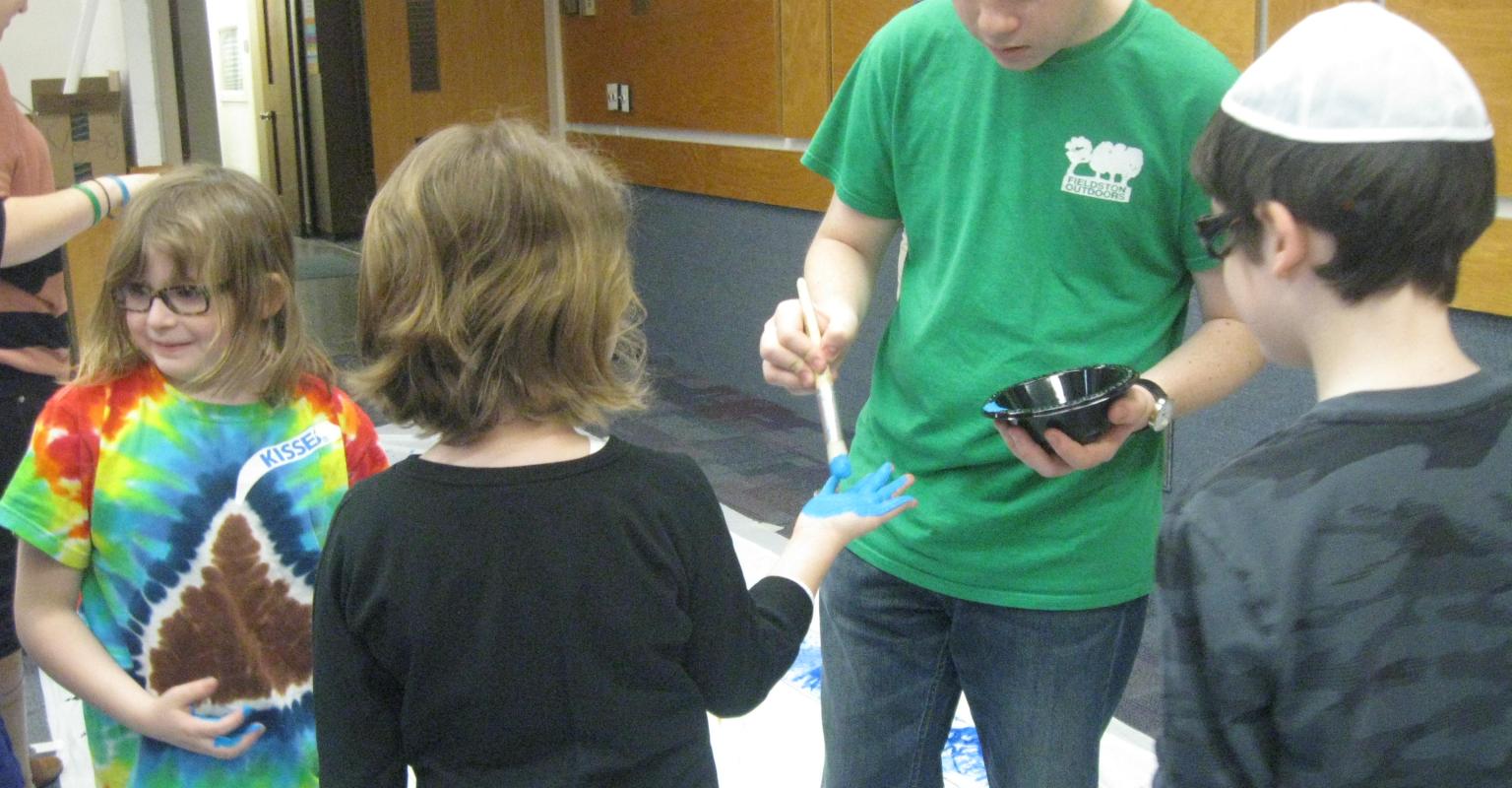Congregation Emanu-El of the City of New York

Model Summary:
The Tribes model aims to build community and strengthen relationships among learners across grades. It also creates an opportunity for learners to see teens in the Emanu-El community as Jewish role models. Rituals allow learners to feel like they are a part of a special, caring community within the larger school.
Tribes is centered around weekly, twenty-five-minute teen-led learning experiences built into the Jewish enrichment curriculum for learners in grades 3-5. Learners of different ages are integrated into four tribes and engage in immersive activities to learn about Jewish values. Tribes is facilitated by teens (tribal chiefs), who design and implement the day’s immersive activities.
On a typical Sunday, Tribe members join together in their Tribe room. A thought question is posted on the blackboard, and learners write their individual responses in their Tribal notebooks. After a brief discussion, the learning moves to become more active, experiential learning. Of the twenty-five minute Tribe lesson, almost fifteen minutes are dedicated to etgar, literally the Hebrew word for challenge, which requires the learners to move around and actively engage with the learning. For example, during one session, after the students had answered the question on the blackboard, they were asked to get out of their seats and go stand next to one of the three signs posted around the room. One read ‘PRAISE,’ one ‘ASK,’ and one ‘THANK YOU.’ As the first part of the exercise, kids were asked to go to one station and pair with another student in the class. At whatever station they chose, they’d have to praise their buddy, thank them, or ask them for help.
The tribal elders (teachers) meet several times over the year to think about how to best integrate Tribes into the school.
- Models-In-Action
- Mussar
- Intergenerational Learning
- After School and Beyond
- Congregational Learning
- Teen Engagement
- Educator Training
- Early Childhood
Discover more

A collection of Intergenerational Learning Models for innovation in Congregational Learning

Congregation Tifereth Israel (CTI), Glen Cove, NY. CTI learners and their families participate in hands-on experiential learning. The curriculum focuses on Jewish values learned through our stories (both modern and ancient).

Conservative Synagogue Adath Israel of Riverdale, Bronx, NY. Project Chaverim (friends) empowers teens in grades 10-12 to work with learners in grades 3 and 4, building community while strengthening Hebrew and prayer reading skills.
